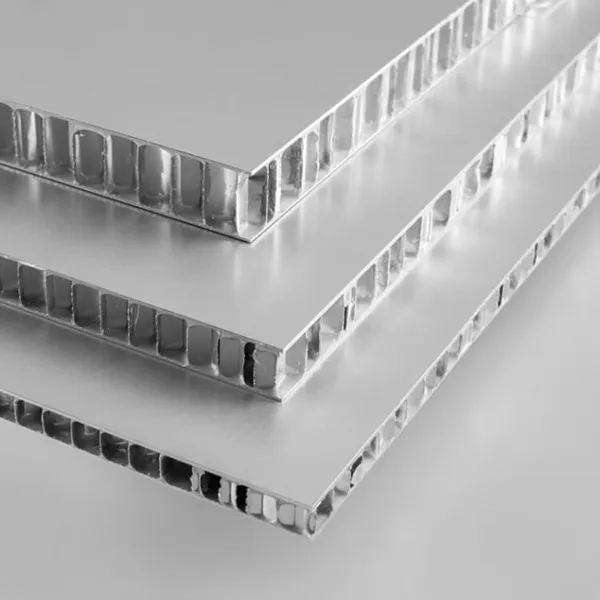
A novel form of ecologically friendly composite decorative material is aluminum honeycomb panel. Its honeycomb sandwich construction is composed of aluminum honeycomb core, double-layer honeycomb panels, and double-layer adhesive layers. Most often, civil engineering makes use of it. The external surface of honeycomb aluminum panels can be treated with spraying, aluminum plating, galvanizing, oxidation, and other surface treatments to create a variety of visual effects. Aluminum honeycomb panels provide superior heat and sound insulation. Its flatness is exceptionally high, and it performs better in wind and pressure resistance than aluminum plates and aluminum-plastic composite materials. What makes aluminum honeycomb panels so well-liked, then?
Structural Composition Of Aluminum Honeycomb Panel:
Decorative aluminum sheets aluminum alloys such as aluminum 3003 and aluminum 5005 are commonly used in honeycomb aluminum sheet ornamental panels. Aluminum 1100 sheets with low alloy content are used infrequently. The decorative surface is sprayed or rolled, with a polyester or fluorocarbon paint finish.
Honeycomb core material is made of aluminum foil and special honeycomb node glue on an aluminum honeycomb core production line. Generally, 3004-h18 aluminum foil or 3004-h19 aluminum foil is used. The factors that affect the performance of honeycomb core aluminum materials mainly include aluminum foil, node glue and honeycomb core’s specifications and other parameters.
The aluminum back sheet aluminum honeycomb sheet should be made of the same material as the panel. The surface should be anodized. The side exposed to the air should be coated with a protective coating. The coating material can be polyester, epoxy, acrylic and other materials to prevent Long-term exposure to air causes corrosion of aluminum plates.
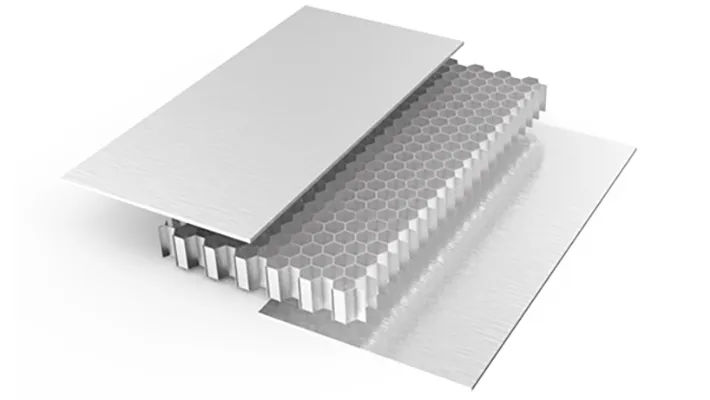
Aluminum Honeycomb Panel Manufacturing Processing:
The specific process flow of aluminum honeycomb panels are as follows:
Preheat → grind and brush the aluminum plate clean → spray structural adhesive and heat up → lay the honeycomb aluminum core → maintain pressure → cut semi-finished products → dry → bond and install.
While satisfying a series of technological processes, related equipment is required for supporting use. The equipment used in the test is a hot press and large-size aluminum honeycomb panel production equipment.
Advantages Of Aluminum Honeycomb Panels:
| High flatness | Durable |
| Quick installation | Fireproof |
| Light weight | Preservative |
| High strength | Not easily deformed |
| Can make large-area boards | Waterproof and moisture-proof |
| Heat insulation | Good seismic performance |
| Sound insulation | Various surface treatments |
Disadvantages of Honeycomb Aluminum Panel:
- Costly: Producing honeycomb structures necessitates additional processing processes and resources, resulting in higher production costs.
- Poor repairability: Due to the unique nature of the honeycomb structure, repairing a single unit is impossible if the aluminum honeycomb panel is damaged or destroyed.
- Response force concentration: When external loads or impacts act on the honeycomb panel’s surface, the stress may create excessive local sound.
- Thermal expansion coefficient difference: The thermal expansion coefficients of the outer layer and aluminum core of aluminum honeycomb panels differ. Temperature variations can cause thermal stress and deformation.
- Honeycomb panel material is relatively rigid and difficult to form into unique shapes.
Applications Of Aluminum Honeycomb Panels:
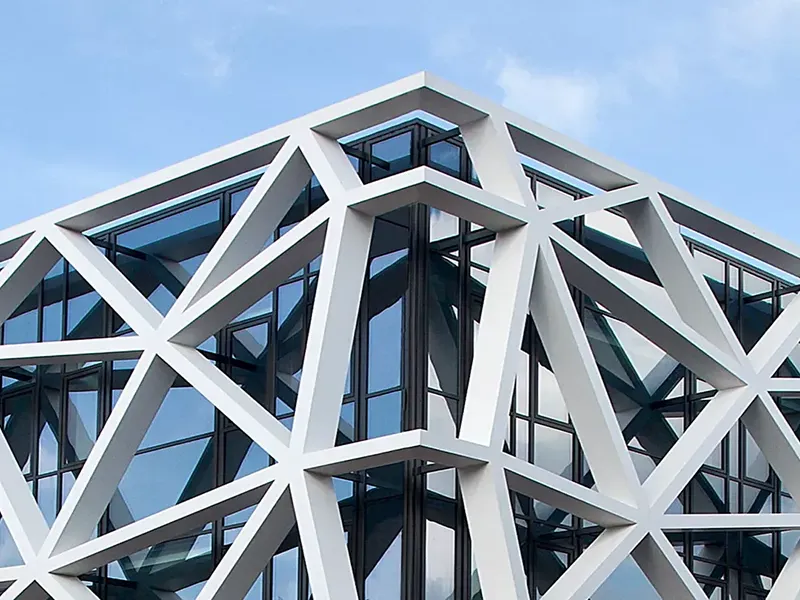
Building Curtain Wall Decoration

Furniture Honeycomb Panels
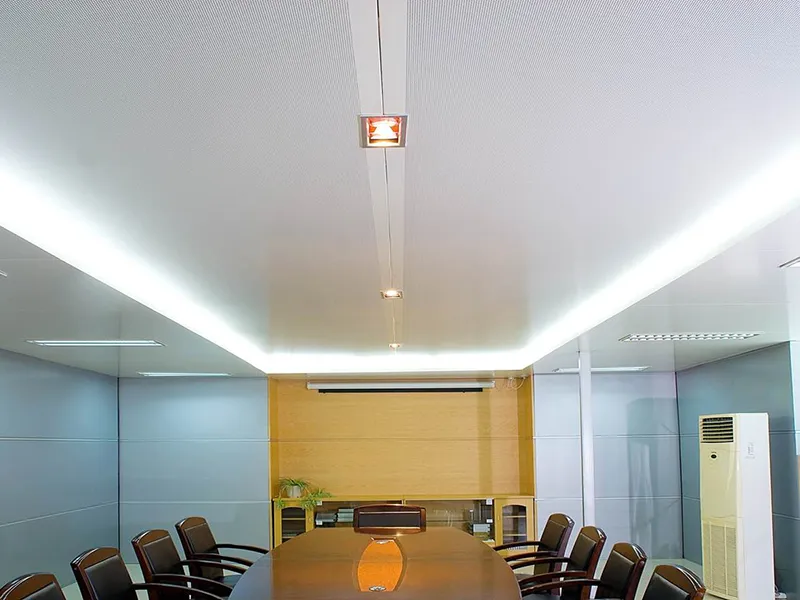
Ceiling
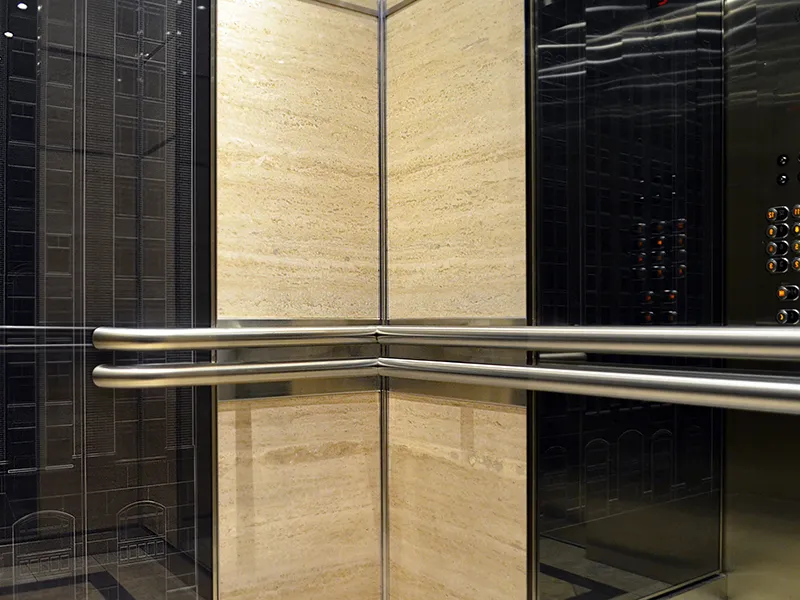
Elevator Engineering

Rail Transit
Installation And Maintenance Of Aluminum Honeycomb:
Installation: First make sure the installation surface is dry, flat and clean. Aluminum honeycomb panels are measured and cut to relevant specifications and exact dimensions before installation. Sealing materials or tapes can be used to avoid moisture penetrating the joints between panels using mechanical fixing systems or bonding techniques, following detailed guidance and recommendations provided by the manufacturer.
Maintenance: Clean the surface of the aluminum honeycomb panel regularly to remove dust, oil and other stains. Do not use harmful substances such as abrasives, strong acids or alkalis to avoid damaging the surface coating; regularly check the fixing system of the aluminum honeycomb panel.
How To Select High Quality Aluminum Honeycomb Panels:
Determine the honeycomb core’s thickness. The honeycomb core’s thickness ranges from 7 to 9 mm. Honeycomb cores with side lengths of 5 to 6 millimeters are typically used in suspended ceilings. The greater the number of support points, the flatter the board surface, the greater the resistance to external pressure, and the higher the density. It can be utilized to absorb impact energy and prevent wall damage by acting as a collision avoidance, shock absorption, and impact absorbing material.

Check to see if the manufacturer has a construction plan that fits the product, as well as a formal national quality inspection report and an environmental protection label.
The aluminum material is made of raw aluminum, which is not prone to unevenness, pits, etc. and ensures a smooth surface.
Check the flatness by feeling it carefully with your hands. There should be no dents or bumps on the aluminum surface. The surface of qualified wall panels should be smooth and bright with good gloss.
From a technical point of view, good aluminum honeycomb panels have small gaps at the joints, no defects, and good appearance.
Take a look at the surface craftsmanship. In general, the less expensive ones are single-coated. The majority of the ones on the market are double-coated. It is preferable to choose three coats.
Aluminum Sheet vs Plastic Sheet vs Honeycomb Panel:

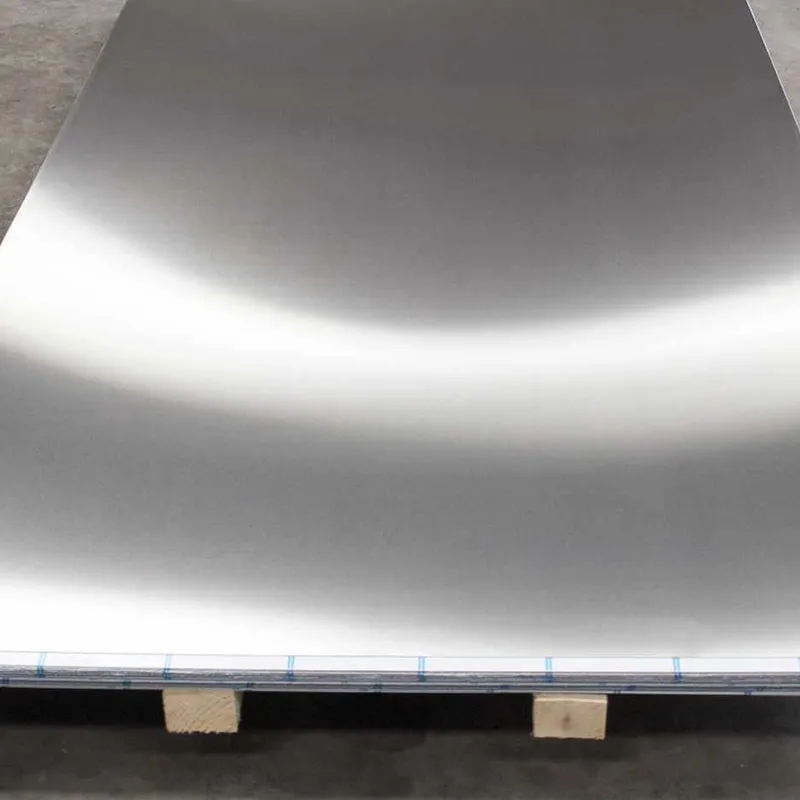
What is aluminum sheet?
The aluminum sheet is rolled into shape from high-quality aluminum sheet material.
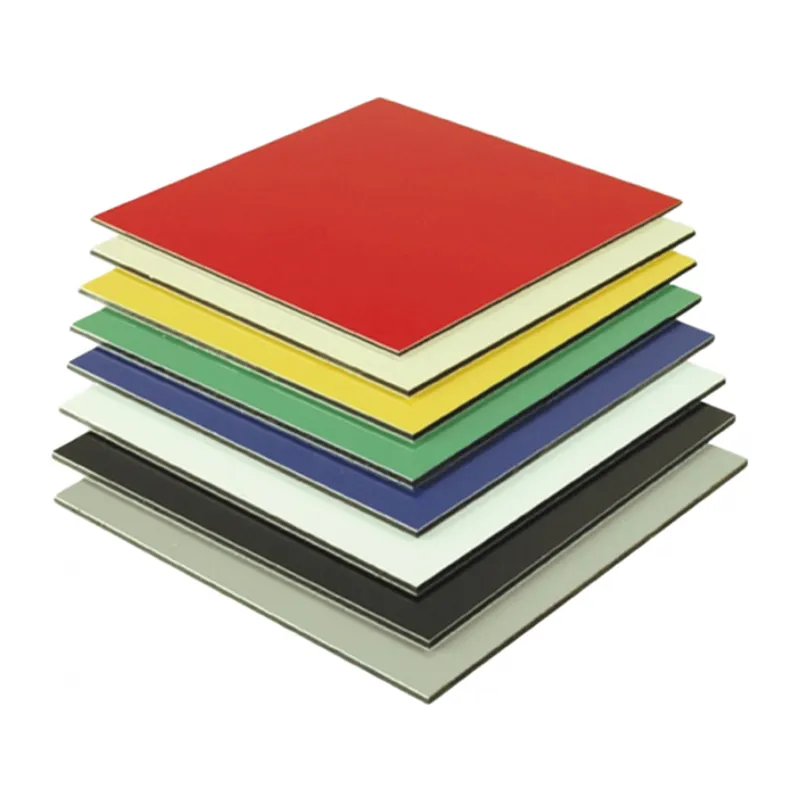
What is aluminum plastic sheet?
Aluminum plastic sheets refer to a three-layer composite panel with plastic as the core layer and aluminum on both sides. The surface of the product is covered with a decorative and protective coating or film (generally referred to as a coating unless otherwise specified). The decorative surface of the product.
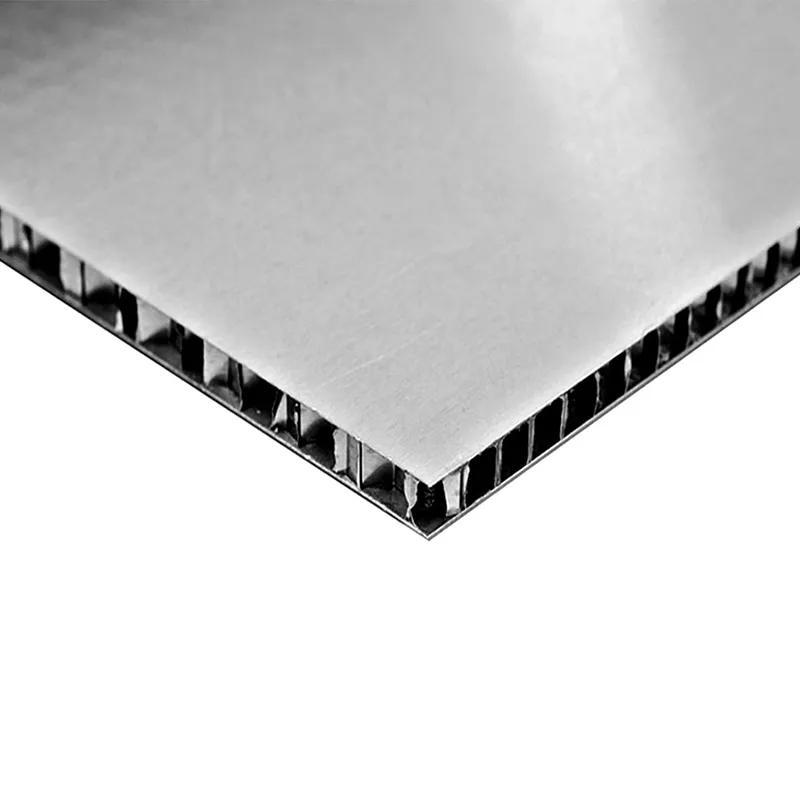
What is honeycomb aluminum panel?
Aluminum honeycomb panels have a “honeycomb sandwich” construction and are built of high-strength alloy aluminum as the top layer, bottom plate, and aluminum honeycomb core material in high-temperature and high-pressure composite panels.
To begin, the aluminum sheet is one layer of aluminum alloy sheet, the aluminum plastic sheet is two layers of aluminum plates sandwiched between them, and the aluminum honeycomb is two layers of aluminum plates sandwiched between them. Aluminum honeycomb panels are the most costly to manufacture, followed by aluminum veneers and, finally, aluminum-plastic sheets. The cost will change if there are any processing requirements. Additionally, the manufacturing of waste materials is necessary for the production of aluminum honeycomb panels and aluminum-plastic plates, resulting in higher prices.
People Also Ask:
How Strong Are Aluminum Honeycomb Panels?
The tensile strength of aluminum honeycomb panel is usually between 50 MPa ~ 200 MPa. This strength performance typically depends on several factors, including the thickness of the aluminum skin, the type of aluminum alloy used, and the cell size and density of the honeycomb core.
How Do You Cut Aluminium Honeycomb?
If you meet the requirements to operate a CNC cutting machine, you can program the machine’s cutting tool to precisely cut along the desired shape. Water jet cutting achieves this by combining high-pressure and abrasive water flows; hand tools like a chainsaw or reciprocating saw can be used for small-scale or on-site cutting. The aluminum honeycomb structure can be protected by using a fine-tooth saw blade and selecting the right cutting speed and knife shape.
How Thick Is An Aluminium Honeycomb Panel?
The panel, bottom panel, and honeycomb core are the three components of aluminum honeycomb panels. The thickness of the panel runs from 0.8 to 3.0 mm, and the thickness of the floor panel ranges from 0.8 to 3.0 mm as well. The thickness of the panel is normally between 10 and 100 mm. The size of aluminum honeycomb panels are typically 1500 by 5000 mm.


